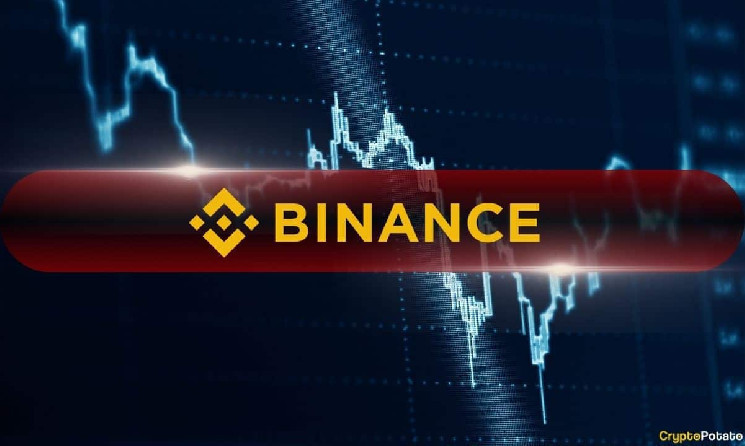The Rise of Cryptocurrency Payments: A Global Phenomenon
Introduction to the Growth of Cryptocurrency Payments
The world of cryptocurrency has seen remarkable progress in recent years, and one of the most significant trends is the increasing use of crypto for everyday payments. Platforms like Binance Pay have emerged as pioneers in this space, bridging the gap between traditional finance and digital assets. In 2024, Binance Pay experienced a surge in user adoption, with its user base tripling compared to the previous year, reaching an impressive 41.7 million users. This growth underscores the growing confidence in cryptocurrency as a viable medium of exchange. The total transaction volume processed through Binance Pay in 2024 was a staggering $72.4 billion, a monumental jump from just $2.5 billion in 2021. This exponential growth highlights the increasing role of crypto in facilitating transactions worldwide.
Stablecoins Lead the Charge in Cryptocurrency Payments
Stablecoins have emerged as the backbone of cryptocurrency payments, providing stability and reliability in an otherwise volatile market. Among these, Tether (USDT) dominates, accounting for a whopping 80% of Binance Pay’s total transaction volume, which translated to $57 billion in 2024. The popularity of USDT can be attributed to its peg to the US dollar, making it a preferred choice for users seeking to avoid the price fluctuations associated with other cryptocurrencies. Other major cryptocurrencies like Bitcoin (BTC), Ethereum (ETH), and Binance Coin (BNB) also contributed significantly to the transaction volume, with $6.6 billion, $2.4 billion, and $2.2 billion, respectively. These figures represent 9%, 3%, and 3% of the total transaction value, showcasing the diversity in payment options on the platform.
Another stablecoin, USD Coin (USDC), also saw remarkable growth, with a 1,338% increase in transaction count and a 48% rise in transaction volume. This surge in USDC usage is a testament to the growing trust in stablecoins as a practical solution for everyday transactions. The dominance of stablecoins in the payment space is not surprising, given their ability to mitigate the volatility often associated with cryptocurrencies like Bitcoin and Ethereum. As more businesses and individuals embrace crypto payments, stablecoins are likely to continue playing a pivotal role in driving adoption.
The Role of Bitcoin and Ethereum in Cryptocurrency Payments
While stablecoins dominate Binance Pay transactions, other prominent cryptocurrencies like Bitcoin and Ethereum are also gaining traction. In 2024, Bitcoin transactions on Binance Pay surged by 73%, reaching $6.6 billion, while Ethereum payments grew by 69%, totaling $2.4 billion. These figures highlight the growing acceptance of Bitcoin and Ethereum as payment methods, despite their price volatility. The increasing use of these cryptocurrencies for transactions suggests that users are becoming more comfortable with the idea of using crypto for everyday purchases, even if it means dealing with price fluctuations.
Solana (SOL), another popular cryptocurrency, saw a dramatic rise in payment transactions, with a year-over-year increase of 656%. This growth was fueled by Solana’s high transaction speed and low fees, making it an attractive option for users looking for efficient payment solutions. Similarly, USD Coin (USDC) and Binance Coin (BNB) recorded notable growth, with increases of 48% and 29%, respectively. These trends indicate a broader shift toward the use of various cryptocurrencies for payments, driven by improvements in technology and infrastructure.
Broader Market Trends and Institutional Adoption
The growth of Binance Pay aligns with the broader expansion of the cryptocurrency market. In 2024, the total value of Binance’s cryptocurrency reserves exceeded $100 billion, marking a 137% increase from the $43 billion recorded at the start of the year. This surge in reserves reflects the increasing institutional interest in cryptocurrencies, as well as the growing confidence in crypto as a store of value and a medium of exchange. The rise in reserves is also a testament to Binance’s growing role as a facilitator of cryptocurrency transactions, further solidifying its position as a leader in the digital asset space.
Global Cryptocurrency Adoption on the Rise
The growth of Binance Pay is part of a larger global trend of increasing cryptocurrency adoption. According to a report by Crypto.com, global cryptocurrency ownership saw a 13% increase in 2024, rising from 583 million users in January to 659 million by the end of the year. Bitcoin ownership grew by 13.1%, reaching 337 million users, while Ethereum ownership increased by 13.6%, with 142 million users. These numbers indicate that cryptocurrencies are becoming more mainstream, with an increasing number of people around the world embracing digital assets.
The rise in Bitcoin adoption was driven in part by institutional interest and favorable policies from governments and regulators. For instance, the US saw significant growth in Bitcoin investment, with between 300,000 and 1.2 million people investing in BTC through US spot exchange-traded funds (ETFs). Pro-crypto policies from US President-elect Donald Trump also played a role in boosting Bitcoin’s popularity. Ethereum’s growth was fueled by the launch of spot Ethereum ETFs and the rally of Ethereum Layer 2 networks following the Dencun upgrade, which enhanced scalability and usability. These factors contributed to a surge in investor participation, further driving the adoption of cryptocurrencies.
The Role of Governments and Regulations in Shaping the Future of Cryptocurrency Payments
As cryptocurrency adoption continues to grow, governments and regulatory bodies around the world are increasingly taking notice. While some countries have implemented strict regulations on crypto, others have embraced it as a means of fostering financial innovation. For example, the US has seen a wave of institutional interest in cryptocurrencies, driven in part by the launch of spot ETFs. These developments highlight the importance of regulatory clarity in shaping the future of cryptocurrency payments.
Regulatory environments will play a crucial role in determining the pace of adoption in different regions. In the US, the positive stance of President-elect Donald Trump on cryptocurrencies has created a favorable environment for growth. Similarly, other countries that adopt pro-crypto policies are likely to see accelerated adoption rates. However, regulatory challenges remain a hurdle in some regions, as governments grapple with the complexities of overseeing a decentralized financial system.
Conclusion: The Future of Cryptocurrency Payments
The data from Binance Pay and global cryptocurrency adoption trends paint a clear picture: cryptocurrencies are becoming an integral part of the financial ecosystem. With the rise of stablecoins, the increasing use of Bitcoin and Ethereum for payments, and the growing institutional interest in digital assets, the future of cryptocurrency payments looks bright. As technology continues to evolve and regulatory frameworks become more defined, we can expect to see even greater adoption of cryptocurrencies in everyday transactions.
The growth of Binance Pay and the broader cryptocurrency market underscores the transformative potential of digital assets. Whether it’s through stablecoins, Bitcoin, or other cryptocurrencies, the world is steadily moving toward a more decentralized and efficient financial system. As more businesses and individuals embrace crypto, the boundaries between traditional finance and digital currencies will continue to blur, paving the way for a new era of financial innovation.















